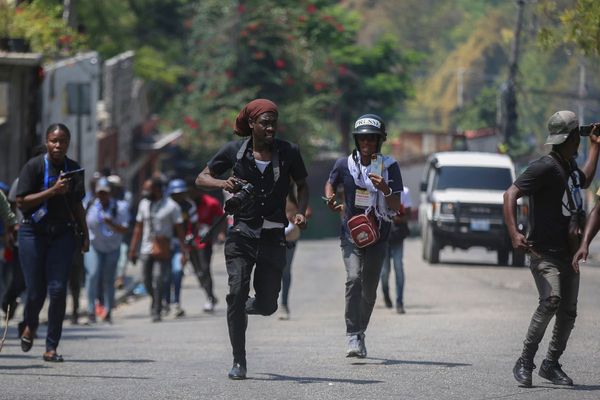On January 10, 2022, booster doses were rolled out for health-care and frontline workers and those above 60 years with comorbidities. It was then expanded to all adults above 18 years from April 10. The greenlighting of booster doses on December 25, 2021 was done even without the approval of the vaccine approval body of the National Technical Advisory Group on Immunisation (NTAGI). At the time of greenlighting booster doses and even now, only Covaxin and Corbevax booster trial data are available. No clinical trial data of Covishield as a booster dose are available even now, seven months after the rollout of booster doses.
In December last year, when Prime Minister Narendra Modi announced the rollout of booster doses for the three high-risk, vulnerable categories, only the same vaccine as used for primary vaccination — homologous boosting — was allowed.
The phase-3 clinical trial data of Bio E’s Corbevax vaccine given as a booster dose to people who had received either Covaxin or Covishield during primary vaccination — heterologous boosting — showed the vaccine to be safe and effective in producing elevated antibodies levels.
Based on this data, on June 3, the Indian drug regulator approved Corbevax as a heterologous booster for all adults; NTAGI’s approval came at the end of July. And on August 10, the government approved the use of Corbevax as a heterologous booster shot to all adults who have received two doses of either Covaxin or Covishield.
The clinical trials of heterologous boosting carried out in other countries have found greater elevation of antibody levels (which is the criterion used for regulatory approvals) than homologous boosting.
Heterologous boosting
While Bio E’s phase-3 trial did indeed show Corbevax used as a heterologous booster shot was both safe and enhanced the immune responses, the clinical trial failed to show if heterologous boosting with Corbevax was superior to homologous boosting with either Covaxin or Covishield. This was because the trial used a placebo for the control arm, and hence, no comparison could be made with homologous boosting.
Just like the second dose, a booster dose — homologous or heterologous — too will produce elevated immune responses when administered a few months after primary vaccination. So, the elevated immune responses seen when Corbevax was used as a heterologous booster was not unexpected.
“Third shot of any vaccine results in antibody production, be it homologous or heterologous. The evidence and broader principle are that heterologous boosting results in far greater quantities of antibodies than homologous boosting,” says Dr. Chandrakant Lahariya, Physician-epidemiologist and vaccines specialist. “So, while every combination has not been studied, cumulative scientific evidence and understanding of immunology together, it is fair to believe that Corbevax as heterologous booster is a choice of vaccine for India,” he adds.
So people who prefer a heterologous booster shot with Corbevax can be quite sure that the immune response might be higher than getting boosted with the same vaccine as used for primary vaccination but will not know how much more effective Corbevax will be compared with homologous boosting.
In contrast, a heterologous comparator trial was conducted by Dr. Gagandeep Kang, Professor of Microbiology and her team at the Christian Medical College (CMC), Vellore. The trial compared the safety and efficacy of Covaxin and Covishield as a heterologous booster. The trial found that people who had received two doses of Covaxin followed by Covishield booster shot showed higher antibody levels compared with people who had received two doses of Covishield followed by Covaxin as a booster shot.
The government had recently reduced the gap between the second dose and the booster shot from nine to six months. If the nine months gap between the second dose and the booster shot was decided without any data, there is no scientific evidence of better immune responses when the booster dose — homologous or heterologous — is given six months after the second dose.
“In my opinion, once two primary shots are administered for healthy adults, the approach should be to delay the booster shot as long as possible. For high-risk individuals with no history of COVID-19 infection, it could be a six- or nine-month interval for precaution shots. However, everyone else, including adults aged 18-59 years with co-morbidities but with past infection can delay booster vaccination for nine months or even longer after the second shot,” he says.
Poor uptake
Besides the issue of efficacy, the larger question is the poor uptake of booster doses even among the three high-risk, vulnerable groups — health-care and frontline workers and those above 60 years. Despite the three categories becoming eligible for a booster shot from January 10 onwards, 65% of health-care workers have taken the booster shot as of August 16; at 72%, it is slightly higher among frontline workers. With 30% and 13%, the lowest uptake of booster shots is among adults older than 60 years and those in the age group 45-59 years, respectively.
The uptake has been low in the 60 years plus age group despite comorbidity conditionality was removed and the vaccine became available for free. The decision to make booster doses free for a limited period defies any public health logic. “I don’t understand the rationale of making COVID-19 precaution dose free for 75 days in government facilities. To me, it is very arbitrary,” says Dr. Lahariya.
Role of Omicron
It is true that a large percentage of people, both fully vaccinated and even boosted and the unvaccinated were infected with one or more of Omicron variant sub-lineages. It is currently not known if fully vaccinated people who have been subsequently infected gain substantially when boosted. “Vaccination does not protect from reinfections and the majority of India’s adult population has received both recommended shots. Therefore, giving a third or fourth or any subsequent shot is not going to prevent infections. The role of boosters in providing other benefits in terms of preventing severe disease or deaths is also marginal or limited,” Dr. Lahariya says.
But considering that the percentage of the population that has been boosted is small and yet hospitalisations and deaths have not increased, do we need to get boosted at all? “As per current scientific evidence and Indian context, a third or precaution shot is needed only for high-risk and vulnerable populations. For others, it should be a voluntary choice and that is the approach in India,” he adds.
And given the greater immune escape capability and less disease severity in the fully vaccinated when infected with any of the Omicron variants, it is again unclear if a booster dose is necessary for all adults. “The booster or precaution dose policy needs to be more granular than the primary vaccination policy. For the high-risk and vulnerable population, a third shot should be administered. Thereafter, in India, there is no need of any further shot for any population subgroup,” he says.
Also, the booster doses of all three vaccines — Covishield, Covaxin and Corbevax — have been developed based on the ancestral strain and not any of the Omicron variants. So, the question is whether homologous or heterologous boosting based on the ancestral strain will have the same effect as a booster shot based on one of the Omicron variants. “The level of antibodies produced by first generation vaccines against Omicron is slightly lower. However, the difference is marginal. That is not a reason, in my opinion, to argue for an additional shot. While research on multivalent or newer generation vaccines should continue, availability of such vaccines would not make an automatic case for another shot,” Dr. Lahariya adds.







